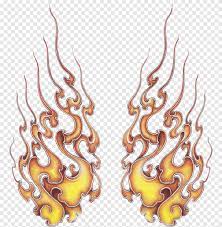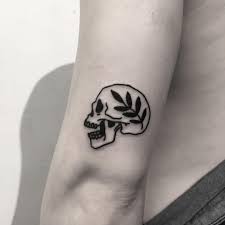
Japanese Tattoos can be an inspiring reminder that any obstacle can be overcome, with each color having particular significance – red represents bravery and motherhood, while yellow symbolizes positivity.
Samurai
Samurai are highly skilled traditional swordsmen who abide by an honor code. These warriors frequently display their pride with an official Samurai tattoo.
Dragons
Japanese culture holds the dragon as a powerful symbol, often representing wisdom and an ability to manipulate forces within nature for good. They reside on water and air and symbolize reconciling opposites (yin and yang). Dragon Tattoos may represent generosity, such as helping others, or creativity. Tattooing your love of Japan on your body with the image of a dragon can be an ideal way to demonstrate this appreciation. A dragon tattoo can be created anywhere on your limbs or back and enhanced with colorful peony flowers or Koi fish for extra detail. Your dragon may appear as either an angry beast or as a tranquil spirit, depending on its depiction.
Hannya Mask
The Hannya mask is another popular Japanese tattoo design choice. Representing women possessed by jealousy or obsession, their souls can quickly transform into demons if left alone for too long. This tattoo would look stunning on your thigh or shoulder and make an outstanding sleeve piece!
Koi Fish
The Koi Fish is one of the most iconic icons in Japanese folklore and symbolizes perseverance and strength, making it an excellent symbol for those facing difficult circumstances. A tattoo featuring this image is a constant reminder to never give up on their dreams and goals. Fish (in reality, carp) have long been seen as an icon within oriental culture and tradition, with much symbolism associated with them in particular. One popular belief was that if a koi managed to swim up the falls at Dragon Gate on the Yellow River, it would transform into a dragon, which can motivate individuals to overcome obstacles and reach their goals. This motif often serves to inspire and motivate individuals alike. This tattoo of a koi fish features intricate detailing and shading techniques for an eye-catching piece. With its blooming lotus flower design adding femininity, this piece makes a powerful statement of strength and bravery for women who wish to show them.
Geisha
Geishas have long been recognized as iconic cultural symbols in Japan. While their tradition has faded due to their exclusiveness and expense, Kyoto remains the pinnacle of geisha culture. The training period (known as “shikomi”) of geishas typically lasts several months to one year and includes basic dance and music lessons. When she completes this period, they proceed with the marriage ceremony, where they exchange their red collar for one made entirely from white fabric so they may debut as geishas and begin entertaining guests. Geishas were traditionally paid only by one patron known as a “Danna.” While romantic feelings could arise between them, more often, their relationship remained solely platonic. Today’s geishas are typically self-employed and rely on tips from their clients as income. While some still engage in prostitution, most have moved towards fulfilling artistic and entertainment roles. Geishas have come to symbolize traditional Japan for its beauty and grace.
Peony Flowers
Japanese culture views peonies as symbols of nobility and honor, often pairing them with cherry blossoms to represent spring. Peonies also frequently feature in Buddhist religious imagery as an embodiment of transience and beauty; this floral tattoo features minimal fineline style with black outlines and gray tones for shading.
Dragons and Symbolism
Dragons represent courage and strength. Wearing them as a reminder of loved ones who have passed is also a form of perseverance and remembrance. Dragons also symbolize balance, an essential aspect of Japanese culture.
Foo Dog and Chrysanthemum Flowers
The Foo Dog, or half-lion, is an ancient symbol of strength and protection believed to protect from evil spirits while bringing luck. Chrysanthemum flowers represent Taoist simplicity and perfection and play an integral role during harvest season and autumnal equinox celebrations; furthermore, they’re often used as a motif that shows appreciation of life’s cycle.

